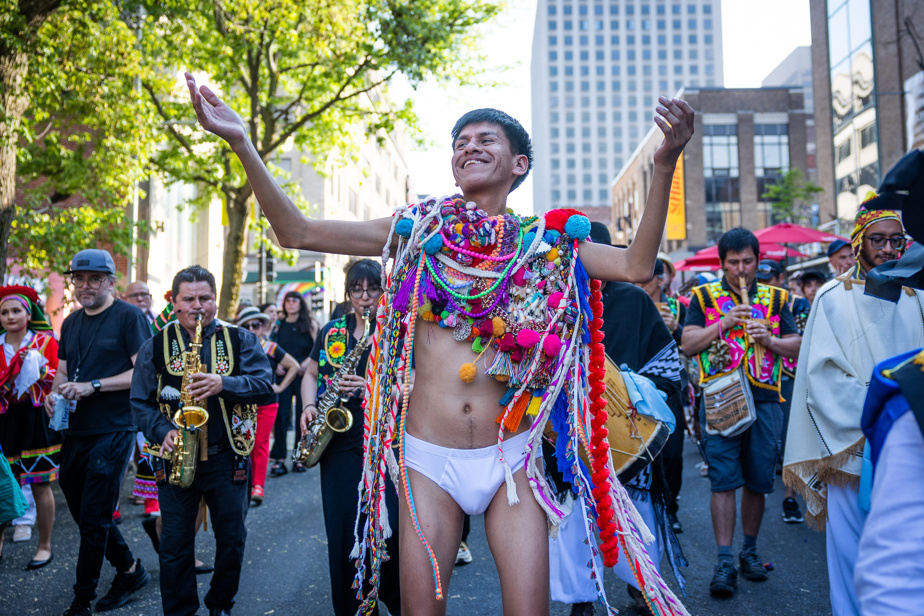
PHOTO CATHERINE LEFEBVRE, SPECIAL COLLABORATION
Born in the hinterlands of northern Argentina, Tiziano Cruz fled poverty by settling in large cities, where he studied at the national universities of Tucumán and Córdoba before deepening his practice in performing arts. and visuals. The death of his sister, victim of negligence of the hospital system in 2015, was the starting point of his very politicalFamily trilogyof which Soliloquío is the second part.

PHOTO CATHERINE LEFEBVRE, SPECIAL COLLABORATION
Each representation of Soliloquío is preceded by a parade with local artists of Andean origin. By weaving ties and building bridges with each local community he passes through, the artist tries to reconnect, through dance, with a culture he does not know, to reactivate a lost collective memory. Dressed in traditional clothes, the dancers, accompanied by musicians, walked the section of Sainte-Catherine Street between Place Émilie-Gamelin and Le National, under the eyes of a curious and cheerful audience.

PHOTO CATHERINE LEFEBVRE, SPECIAL COLLABORATION
The artist wears a Quipus, a traditional Inca costume made up of a main cord to which are added other colored cords, woven in wool or cotton, a way for everyone to affirm their identity and their place in the society. All the elements of the Quipus that Tiziano Cruz wears were collected by his father during a trip of several hours that he undertook in the villages near his childhood home, located in Jujuy.

PHOTO CATHERINE LEFEBVRE, SPECIAL COLLABORATION
At the corner of Atateken and Sainte-Catherine, the procession stops. The artist pronounces in Spanish – each statement then being translated into French by an interpreter – the beginning of his manifesto, which he will continue later on the theater stage. He denounces the systemic exploitation of indigenous peoples and their lands, the violent discrimination suffered by the marginalized, poor and minorities of this world, the current “policy of bleaching”. “They always wanted to erase us,” he said.

PHOTO HUMBERTO ARAUJO, PROVIDED BY THE FTA
Soliloquío is inspired by the fuzzy and scattered childhood memories of Tiziano Cruz and the 58 letters the artist wrote to his mother, seen here in the photo, during the pandemic. The play is a poignant soliloquy, in dark poetry, by a man suffering from the “sickness of forgetting” who presents himself with all his paradoxes, which are also those of a world where “the economy of violence”, dominated by capital and the corruption of politics, from which not even the artist escapes, guilty of participating in the commodification of art.

PHOTO DIEGO ASTARITA, PROVIDED BY THE FTA
“What place does body art have in a country where my body disappears in the face of the desire for a white society? This is the inscription in black capital letters on a white screen that welcomes spectators to the National. In a performance of about forty minutes, alternating between chanted manifesto and performative moments, the artist paints a cynical but lucid portrait of our broken world, trying, in the same breath, to “create new ways of being, and to live, to create new worlds, stripped of all violence”.

Soliloquío
Le National/Meeting point: Place Émilie-GamelinMay 29 and 30, 7 p.m.
